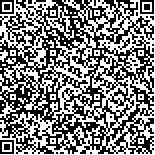下载中心
优秀审稿专家
优秀论文
相关链接
摘要

植被参数是生态遥感定量反演的热点和难点,也是生态系统研究的基础性参数。本文在广泛阅读国内外公开发表的文献资料基础上,将现有的植被生态遥感参数概括为物理类、生化组分类、能量和功能类3大类,系统梳理了每类参数定量反演的主要模型方法,进行优缺点和适用性分析,对现阶段存在的不足和未来发展趋势进行了探讨。物理类植被生态遥感参数主要介绍了植被覆盖度、生物量、叶面积指数、树高等研究进展,生化组分类植被生态遥感参数主要介绍了植被含水量、叶绿素含量和光合能力等研究进展,能量类植被生态遥感参数介绍了光合有效辐射、植被吸收光合有效辐射等研究进展,功能类植被生态遥感参数主要介绍了植被生产力和碳交换量等研究进展。存在的主要问题包括混合像元分解、病态反演、物理模型应用过程中的误差传递、数据融合的尺度效应和空间变异性、模型耦合的最优方案确定问题。
Vegetation parameters are the hotspots and difficulties in the quantitative inversion of ecological remote sensing, and they are also the basic parameters of ecosystem research, as well as the basic parameters of ecosystem research. They have an important impact on the structure, process and function of ecosystems, and have always been hot issues in ecology and remote sensing technology research. However, in actual work, the relevant parameters of vegetation are not obtained through direct interpretation of remote sensing data, but based on the spectral characteristics of vegetation to establish a data model for quantitative inversion calculation, and there are obvious differences in the retrieval results of different inversion methods. Based on extensive reading of publicly published documents at home and abroad, this paper summarizes the existing vegetation ecological remote sensing parameters into three categories: physical, biochemical, energy and functional categories, and systematically sorts out the main quantitative inversion methods of each category of parameters’ advantages and disadvantages and applicability, and the current deficiencies and future development trends are discussed. And this article selects representative common vegetation parameters to introduce one by one, the physical vegetation ecological remote sensing parameters mainly introduce the research progress of vegetation coverage, biomass, leaf area index, tree height, etc. The biochemical group vegetation ecological remote sensing parameters mainly introduce the research progress of vegetation water content, chlorophyll content and photosynthetic capacity. Energy Vegetation ecological remote sensing parameters introduce the research progress of vegetation with Photosynthetically Active Radiation and Absorption of Photosynthetically Active Radiation, and functional vegetation ecological remote sensing parameters mainly introduce the research progress of vegetation productivity and carbon exchange capacity. Although positive progress has been made in the research on the quantitative inversion of vegetation ecological remote sensing parameters, due to the constraints of the ground sensor observation performance indicators and the insufficient knowledge of the vegetation growth and change process, there are still some problems in the research of vegetation ecological remote sensing parameters that need to be resolved. The main problems that exist include the decomposition of mixed pixels, ill-conditioned inversion, error transfer in the application of physical models, the scale effect and spatial variability of data fusion, and the determination of the optimal scheme for model coupling. Generally speaking, the inversion methods of vegetation parameters have been developing in the direction of multivariate methods, multi-method fusion, and continuous improvement of various methods. Data sources are becoming more and more abundant, which can better realize mutual verification and information complementarity between data, and solve the problems of lack of vegetation characteristic information faced in the process of parameter inversion. High-precision vegetation ecological remote sensing parameter products can better study new hot issues related to vegetation carbon sources, carbon sinks, carbon use efficiency, carbon cycle, vegetation and phenology.By comparing the inversion methods of different vegetation ecological remote sensing parameters and the relationship between different vegetation ecological remote sensing parameters, the difficulties and scientific problems existing in the vegetation quantitative remote sensing inversion are discussed, which is convenient for research and technical personnel in related fields.

